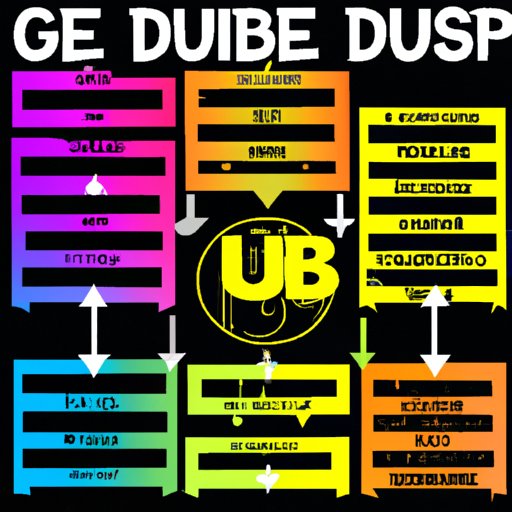The Ultimate Guide to Dubstep: Everything You Need to Know
Dubstep is a genre of electronic dance music that originated in the UK during the early 2000s. While its popularity started to rise within underground music scenes in cities such as London, it wasn’t until the mid-2000s that it began to gain traction and spread globally. Now, dubstep has become one of the most popular genres of electronic music, attracting dedicated fans and producing impressive amounts of creative output.
Understanding what dubstep is, its history, sub-genres, and essential artists is critical to fully appreciate this unique electronic genre. In this article, we’ll provide readers with a comprehensive guide to dubstep, including everything you need to know to enjoy this music fully.
Dubstep 101: A Beginner’s Guide to the Genre
To understand dubstep, it’s essential first to know the basics of its production. Dubstep’s defining characteristic is its emphasis on bass, which is often introduced with a kick or other percussive instrumentation. The key to producing this booming and powerful sound is to layer multiple rhythmic patterns together, giving the music a rich, complex sound.
As a listener to dubstep, it’s essential to pay attention to the emphasis on bass and how it is used creatively. Unlike other genres of electronic music that may put melody at the forefront of the mix, dubstep soundscapes focus on creating an intense and rhythmic low-end of the song.
Breaking Down the Dubstep Sound: An In-Depth Look
Dubstep is instantly recognizable for its use of ‘wub’ and bass sounds, which give the music its characteristic aggressive, sometimes almost violent feel. One of the most important elements of dubstep is how it uses bass as more than just a rhythmic element but rather as a defining characteristic unto itself.
Beyond the use of bass, other musical elements that come together in dubstep tracks such as beat patterns, creative use of sound samples, and chord progressions are also essential to its sound. In-depth analysis of how each part works together can give listeners a newfound appreciation of the complexity that lies beneath the surface of each dubstep track.
A Brief History of Dubstep and How It Became a Global Phenomenon
Dubstep’s origins originate with garage music and drum and bass in London in the early 2000s. The genre grew underground, with artists using pirate radio stations and makeshift venue spaces to experiment with the sound. Early pioneers of the genre included Skream, Benga, and Digital Mystikz, who are now considered key figures to the development of the genre.
The first thing that comes to mind when you hear the term “dubstep” is likely hearing wub sounds and bass drops. This feature has led the genre to garner great popularity – a prime example can be observed in the United States, where dubstep gained significant popularity in the late 2000s and early 2010s, with festivals such as Electric Daisy Carnival, Ultra Music Festival, and Coachella incorporating dubstep tracks into their lineups.
Exploring the Different Sub-Genres of Dubstep: Which Is Your Favorite?
One of the most exciting aspects of dubstep is the sheer variety of sub-genres that have arisen from the original sound. Some of the most popular sub-genres in the genre include brostep, chillstep, darkstep, and riddim.
Each sub-genre of dubstep has its characteristics, underpinnings, and fanbases, making it essential for fans to explore the spectrum to discover new sounds that they might enjoy.
Dubstep and Culture: How This Music Genre Has Influenced Fashion, Art, and Pop Culture
The popularity of dubstep has had a significant impact on popular culture, with its influence stretching beyond music and into various art forms. Its distinctive sound, focusing on heavy rhythms and intense bass, has influenced fashion, art, and even video games.
While the genre’s impact may have been relegated to underground scenes in the past, it has found widespread popularity amongst the masses. The genre has become a formidable force in the music industry, shaping concerts and festivals worldwide.
Interviews with Top Dubstep Producers: Secrets to Their Success and Creative Process
No one knows the secrets to producing outstanding dubstep better than the people who have dedicated their careers to it – and the top producers have fascinating stories to tell. Key individuals who will be lending their insights include Skrillex, Excision, and Flux Pavilion, among others.
As always, success stories come from hard work, perseverance, and a willingness to take risks. By learning how the top producers approached dubstep production and how they overcame challenges, budding producers can take away priceless lessons.
Conclusion
Dubstep is an intricate, music genre, requiring a level of appreciation and understanding to enjoy fully. This Ultimate Guide to Dubstep has sought to provide that. Whether you’re a music enthusiast or producer, this article provides all that you need to get started on the genre and discover what dubstep is truly about. As we have seen, dubstep is much more than just “wub” sounds and bass drops; it is a musical journey that has transformed the world of electronic dance music.
